Paterson, NJ Pollen and Allergy Report for Summer 2023
Pollen Allergy Trends in Paterson, NJ
When is pollen lowest in Paterson, NJ?

February
Lowest month total PPM
Avg. PPM
When is pollen highest in Paterson, NJ?

April
Highest month total PPM
Avg. PPM
How does pollen in Paterson, NJ compare to New Jersey?
Paterson has a higher average PPM than the state of New Jersey.
Paterson yearly avg PPM:
New Jersey yearly avg PPM:
How does pollen in Paterson, NJ compare to the USA?
Paterson has a higher average PPM than the USA.
Paterson yearly avg PPM:
USA yearly avg PPM:
Is pollen worse this year in Paterson, NJ?
Spring 2023 was worse than spring 2022.
Spring 2023 PPM:
Spring 2022 PPM:
Average PPM in Paterson, NJ
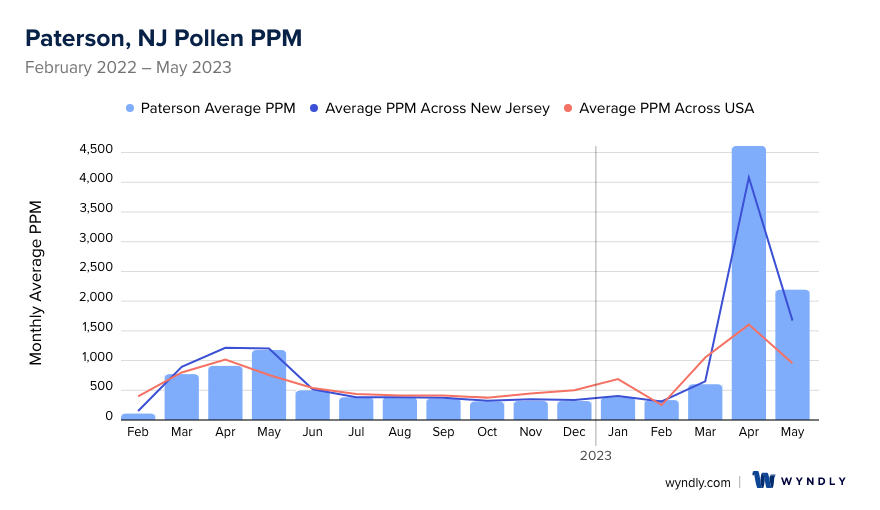
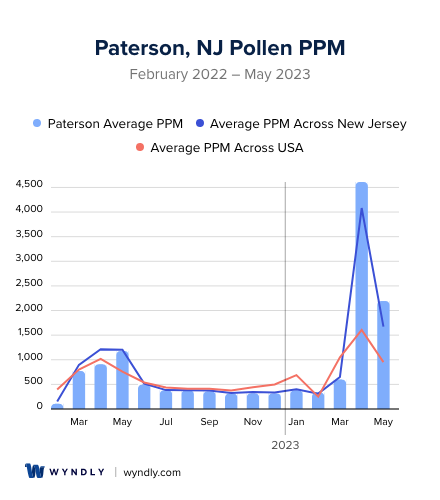
Paterson, NJ Pollen and Allergy Breakdown by Month
Grass
When is grass pollen highest in Paterson, NJ?
April has the highest grass pollen in Paterson, NJ with an average PPM of
When is grass pollen lowest in Paterson, NJ?
December has the lowest grass pollen in Paterson, NJ with an average PPM of
Tree
When is tree pollen highest in Paterson, NJ?
April has the highest tree pollen in Paterson, NJ with an average PPM of
When is tree pollen lowest in Paterson, NJ?
January has the lowest tree pollen in Paterson, NJ with an average PPM of
Weed
When is weed pollen highest in Paterson, NJ?
April has the highest weed pollen in Paterson, NJ with an average PPM of
When is weed pollen lowest in Paterson, NJ?
February has the lowest weed pollen in Paterson, NJ with an average PPM of
Paterson, NJ Pollen Monthly Breakdown by Pollen Type
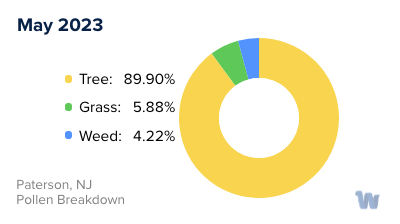
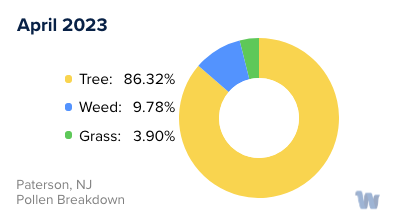
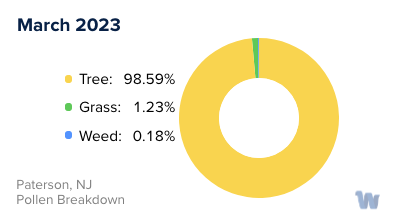
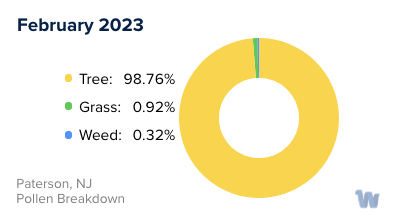
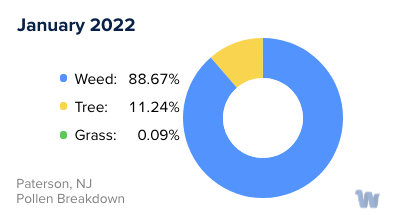
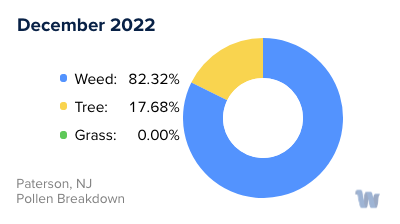
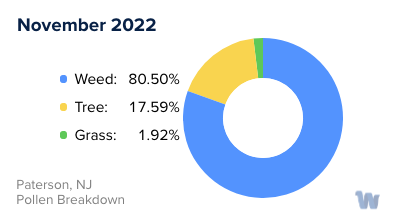
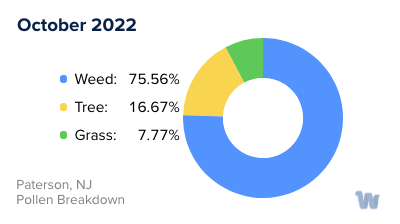
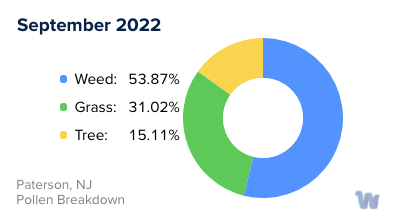
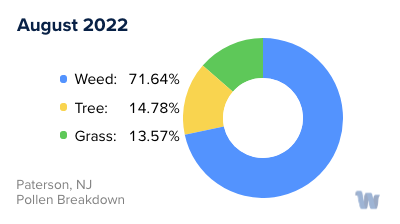
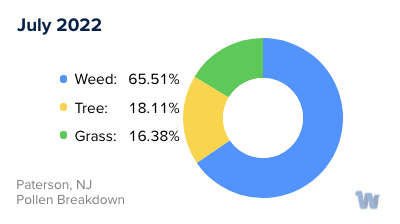
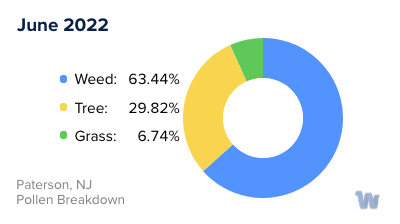
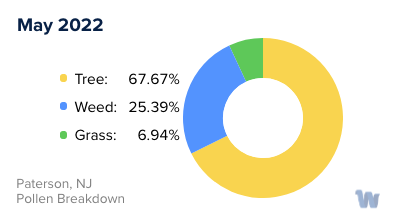
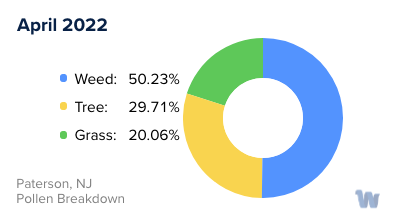
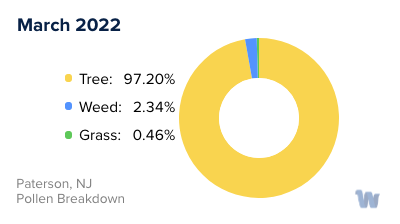
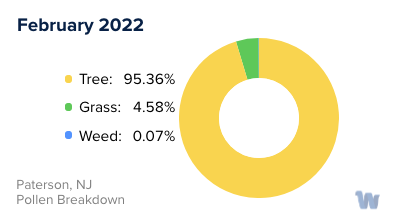
Pollen and Hay Fever in Paterson, NJ
Pollen allergies, also known as hay fever, are a common issue for residents and visitors of Paterson, New Jersey. The culprits behind these allergic reactions are typically types of pollen from trees, grass, and weeds. Each of these has a specific season during which they are most prevalent, potentially causing sneezing, itchy eyes, and other discomforts for allergy sufferers.
Tree pollen is the main offender in the spring, with species such as oak, hickory, ash, walnut, cedar, and mulberry trees contributing to the pollen count. This season typically begins in mid-February, as New Jersey emerges from its colder winter months.
As we move into the summer, grass pollen takes the stage. Timothy grass, bent grass, sweet vernal grass, and orchard grass are among the common types that can lead to heightened allergy symptoms during this period.
Finally, as summer transitions into fall, weed pollen becomes more prominent. Ragweed, lamb’s quarter, wormwood, and orache are common contributors during this time. This phase usually extends into late summer and remains until the end of the allergy season.
It's noteworthy that in Paterson, the pollen counts tend to peak during the months of April, May, June, and September. During these times, the outdoor environment can be particularly challenging for people with pollen allergies. Evenings usually bring some relief, as pollen counts tend to be lower at this time of the day.
While this snapshot provides an overview of the pollen seasons in Paterson, remember that individual experiences may vary. Some people may be more sensitive to certain types of pollen than others, and weather conditions can also influence pollen levels. Always be aware of the local pollen forecast and adjust your outdoor activities accordingly to minimize discomfort.


